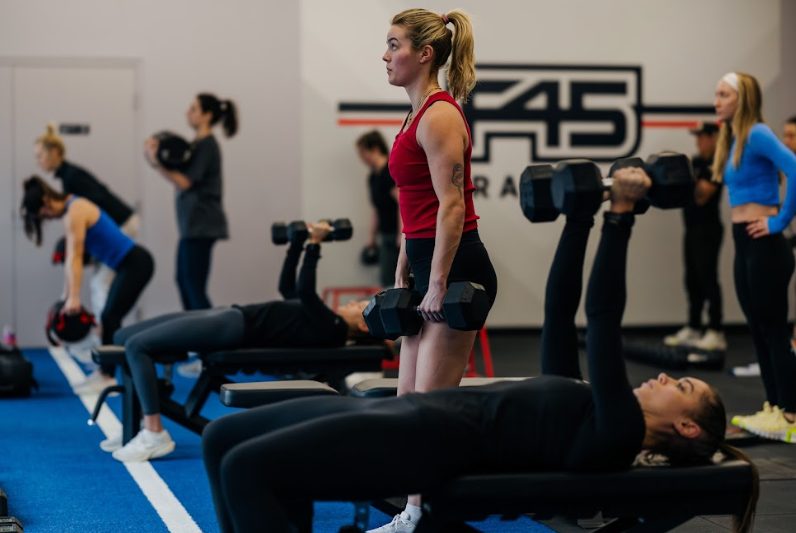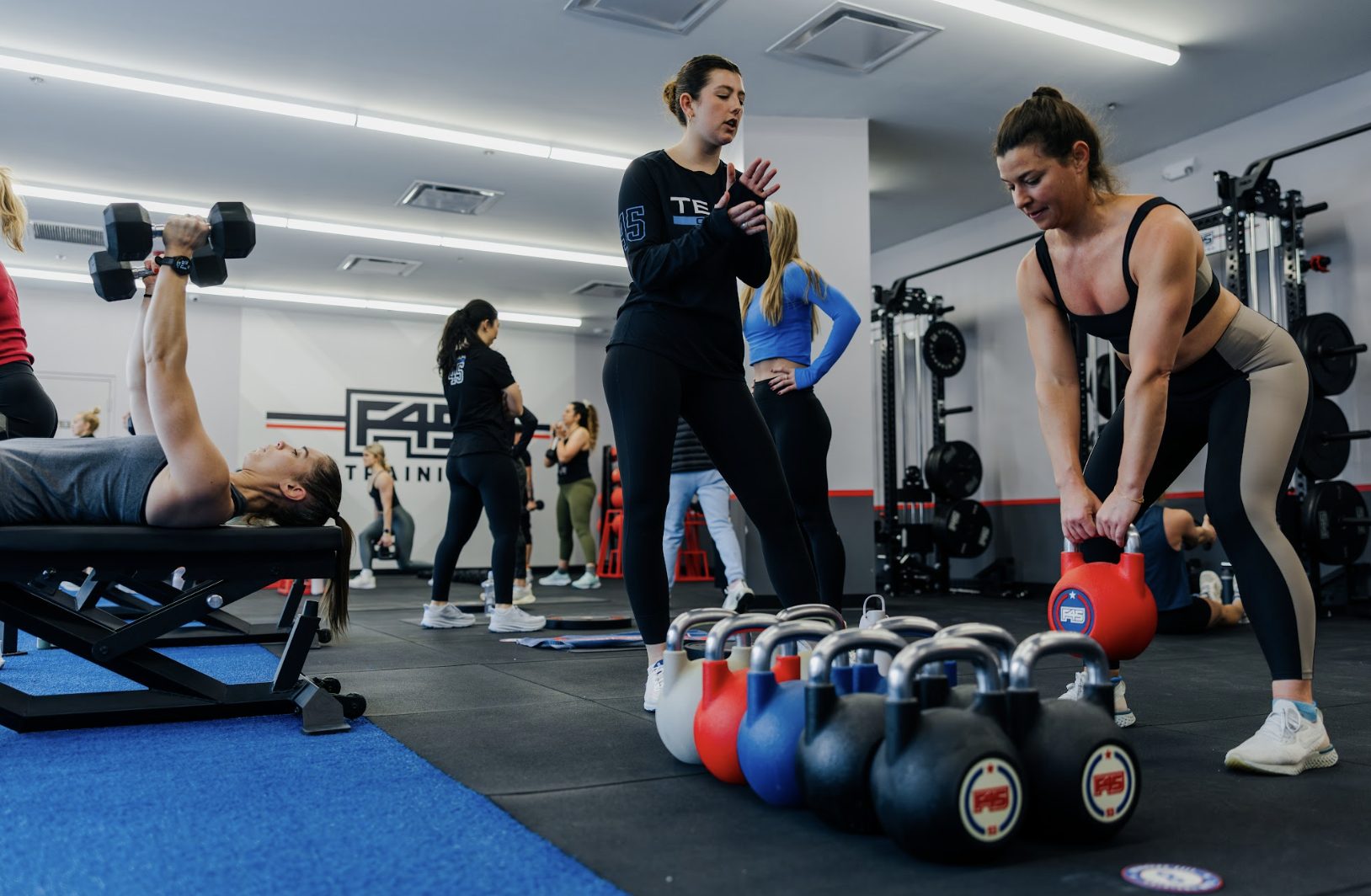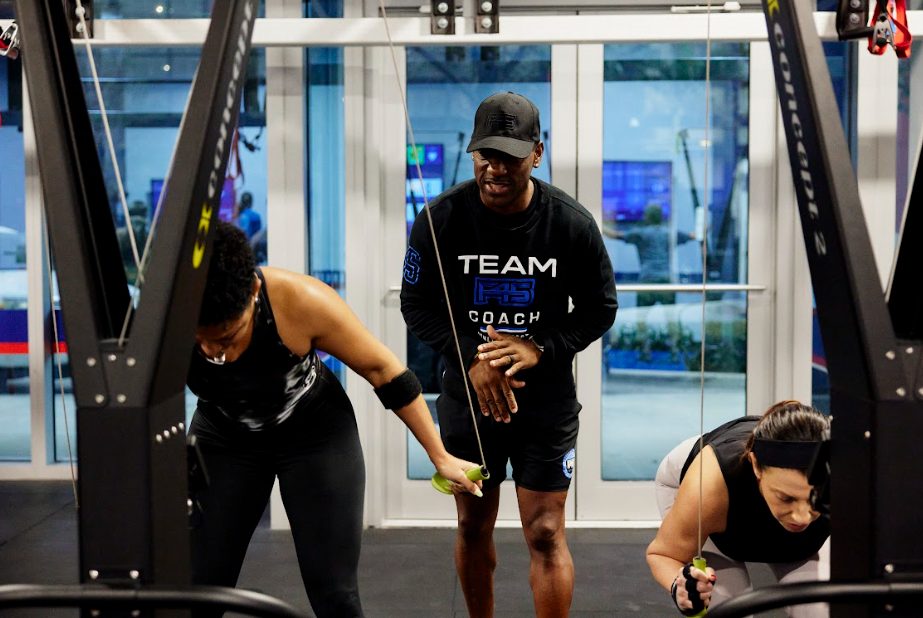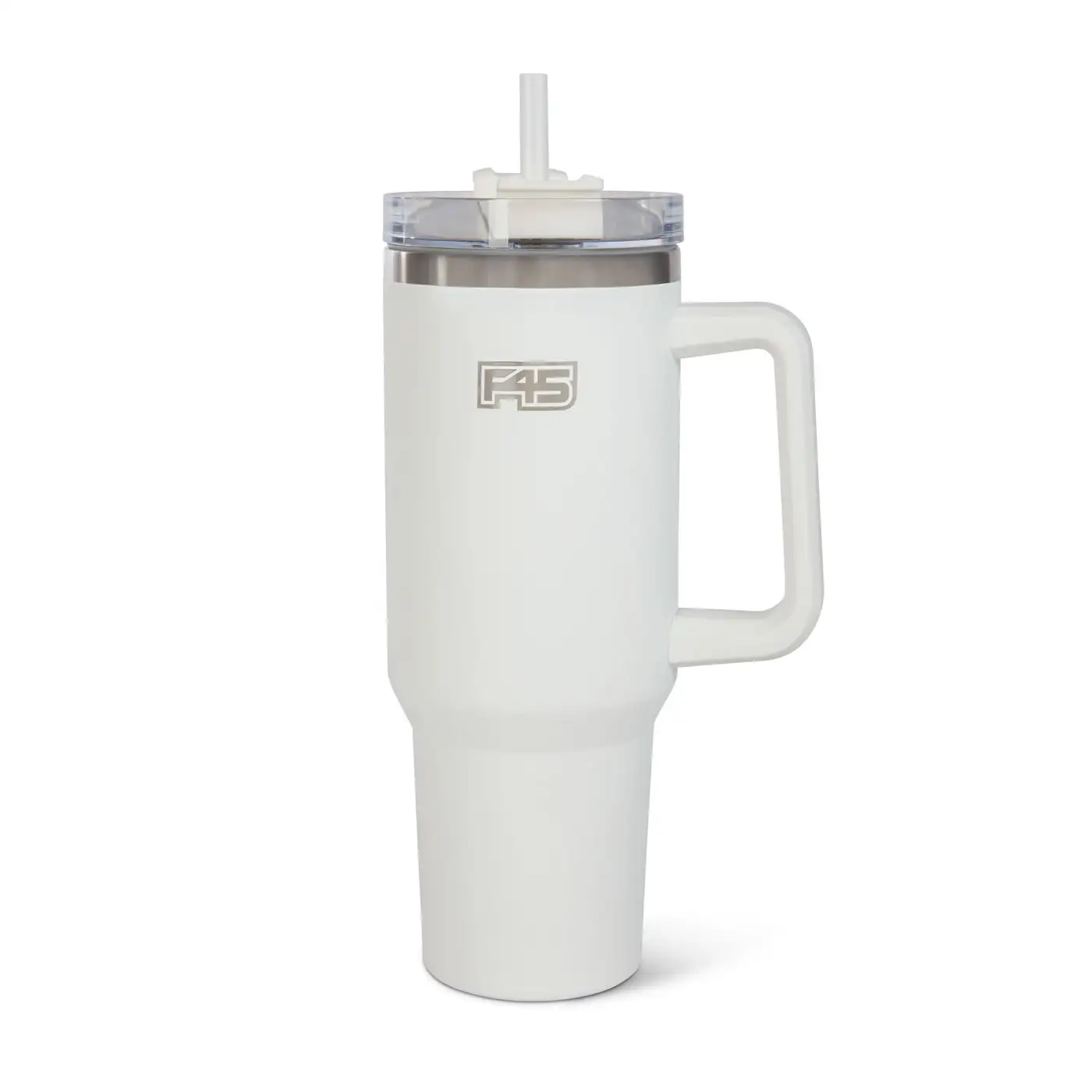Whether you’re a fitness beginner or an experienced athlete, understanding how to structure your training routine can make a huge difference in the way you see – and feel – results. And, when it comes to optimizing your workout performance, avoiding plateaus, and preventing injury during exercise, periodization training is becoming a popular way to build and organize the right workout for you.
Below, the experts at F45 will walk you through the fundamentals of periodization. We’ll explain what periodization is, unpack its phases, and explore its benefits – before walking you through how to apply it your favorite F45 workouts.

What is periodization training?
Periodization training is a systematic approach to exercise in which you plan and vary the intensity, volume and types of workouts you perform over a chosen period of time. The aim? To enhance performance, prevent overtraining, and achieve new personal bests by cycling through phases of high-intensity, recovery, and rest. This approach can be used to fuel a long-term, sustainable fitness routine, or for specific event training (such as a marathon, fitness races or other weightlifting events). Periodization should be individualized based on member goals.
Different types of periodization:
- Linear (gradual increase in intensity, decrease in volume)
- Undulating/Non-linear (intensity and volume vary more frequently)
- Block periodization (focuses on one major goal per block)
- Conjugate or concurrent models (training multiple qualities simultaneously)
The phases of periodization training
Periodization is typically divided into three key phases: macrocycles, mesocycle and microcycles. Each phase serves a specific purpose and, by taking each of them into account, you can optimize your fitness results.
We’ll explain these cycles below – read on for more detail.
Macrocycles
A macrocycle is the longest phase, encompassing the entirety of your training. For example, in sports periodization for soccer, one complete soccer season would be the entire macrocycle. But, for F45 members – where there isn’t a collectively agreed–upon start and end point – this could be a Series or more of training as scheduled throughout our yearly F45 calendar. 6 months of training = Series 1 & 2.
Mesocycles
Mesocycles are shorter phases within the macrocycle, and usually last between three to six weeks. Each mesocycle has a specific fitness goal, such as building and maintaining muscle or improving your running endurance. For different mesocycles, your intensity, volume and focus will shift – allowing for progression while minimizing the risk of burnout. Phases in each series are good examples or perhaps the completion of the F45 Challenge.
Microcycles
These are the smallest phases of periodization training, usually lasting one week. They are the building blocks of mesocycles, and focus on specific elements of your workout: such as your intensity and the exercises you perform each time you train. Microcycles help make sure your training is varied – yet still aligned with the broader goals of your mesocycles and macrocycles.
How to apply periodization training to different types of exercise
Periodization training can be tailored to many forms of exercise – a few of which we focus on here at F45. Whether you want to enjoy cardio workouts, explore the benefits of strength training, or dive into repeat interval training. Here’s how periodization can be applied to a range of different training methods.
Cardio
For cardio, periodization involves alternating between long, steady sessions (such as long-distance running or longer time domains in the studio) and short high-intensity training (like sprints or short, sharp time domains in the studio).
This way, you’re improving both your stamina and explosive power, while allowing enough recovery time for your muscles to adapt and recover.
Resistance
For resistance workouts – whether you’re lifting light or heavy weights – periodization helps you progress the volume and intensity of your lifts.
You can cycle through phases of hypertrophy vs strength training to help your muscles grow bigger (if that’s your goal) and become stronger. At times, periodization training can also involve de-loading (which refers to lifting less weight) to minimize injury risk and promote long-term progress.
Functional Training
When it comes to Functional Training, periodization supports sustainable progress by managing intensity. Functional Training workouts have a lot of variety, so, mesocycles could alternate between resistance-focused exercise and endurance-based intervals – allowing you to push yourself in different ways.
How periodization training benefits F45 workouts
Our high-intensity, functional workouts are designed to push your body to new levels of physical and mental wellness. By structuring your training into phases – each with a specific strength, endurance or recovery focus – you can get more out of your workouts.
Whether your goals are to build lean muscle, improve your cardio fitness, torch calories or enjoy the mental benefits of exercise, periodization workouts ensure your progress is measurable and – sustainable.
Keep reading to explore the benefits of periodization.
Enhances performance
By systematically varying your training intensity and volume, periodization training helps you continually improve. By scheduling recovery or moderate-intensity resistance workouts, you can make sure your body is ready to smash your next personal best when you return to high-intensity weight-based exercises.
Prevents plateaus
Repeating the same workout intensity can lead to plateaus, progress can slow due to a dip in motivation, but more likely, your body never gets to fully recover. By cycling through different mesocycles, you stimulate muscle adaptation, prevent overuse and keep your workout engaging – and to keep things fresh, the exercises in F45 workouts are always changing!
Reduces the risk of injury
Constantly working your body without adequate recovery or rest days leads to overuse injuries and mental burnout. Periodization training strategically balances intensity and rest, allowing muscles, joints, and connective tissues to recover properly. This is especially useful for beginners, who may need to reduce delayed onset muscle soreness after a high-intensity phase.
Optimizes recovery
Blocking out time for recovery is crucial for improving performance, and periodization principles play a key role in this. By planning plenty of active recovery sessions – and moderate-intensity workouts – into your training schedule, you can support muscle repair and reduce fatigue.
Elevates adaptability
In dynamic group fitness training, the ability to adapt is valuable. F45 workouts are always changing, developing different muscle groups to develop your posture, body comfort and wellbeing. By cycling through different mesocycles and microcyles, you are building a complete functional strength foundation, making you more resilient and confident.
Now, you have everything you need to know to use periodization training to take your fitness and workout structure to the next level. For more ways to boost your strength, endurance and power, discover the top 7 workout trends of 2025 next.














